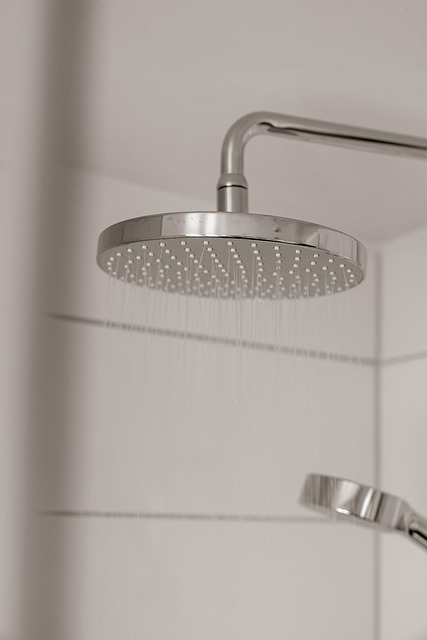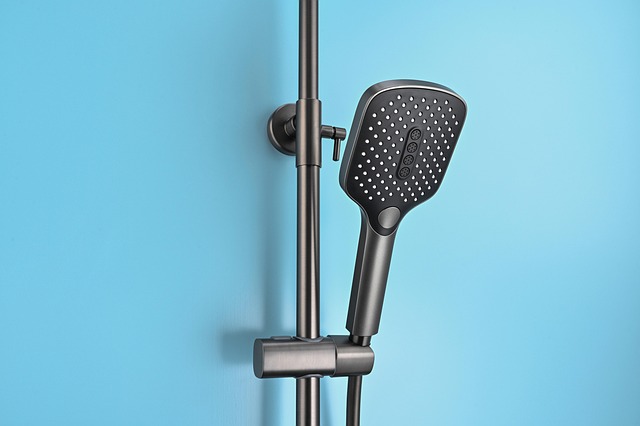Assess your current shower head for leaks, clogs, or outdated design. Take measurements of thread size and consider modern alternatives with improved water pressure, filtration, and energy efficiency. Regular maintenance and timely replacement prevent waste, enhance water control, conserve resources, and save costs. Learn "How to Replace a Shower Head" for a better bathroom experience.
Are you tired of a leaky, clogged, or outdated shower head? It’s time for an upgrade! This comprehensive guide will walk you through the process of replacing your shower head, ensuring a seamless transition. From assessing current issues like leaks and clogs to choosing the right replacement based on your preferences, this article covers it all. Learn the necessary tools, step-by-step installation, and testing tips for a luxurious shower experience. Discover how easy and rewarding swapping out your shower head can be!
- Assessing Your Current Shower Head
- – Identifying issues: leaks, clogs, and outdated models
- – Understanding the importance of regular maintenance
Assessing Your Current Shower Head

Assessing your current shower head is the first step in any replacement project. Start by examining its condition: is it leaky, clogged, or simply outdated? Leaky shower heads can waste significant amounts of water over time, so addressing them promptly is crucial for both your wallet and the environment. Clogged nozzles can restrict water flow, making your shower less enjoyable and efficient. Outdated models might not provide the same level of comfort and water conservation features as newer versions.
When considering how to replace a shower head, look for modern alternatives that offer improved water pressure, advanced filtration systems, or energy-efficient technologies. Some models feature adjustable settings for different types of showers, from gentle rain to powerful massage. Take measurements of the existing thread size (usually 1/2″ or 25mm) to ensure you choose a compatible replacement.
– Identifying issues: leaks, clogs, and outdated models

Shower heads are an often-overlooked component of our daily routines, but they can present several issues that warrant attention. To start, leaks are a common problem, especially around the seal or connections, indicating worn-out parts that need replacement. Clogged shower heads, on the other hand, can be caused by mineral deposits or debris buildup, leading to reduced water flow and a less than optimal shower experience. Additionally, older models may not offer the same level of water pressure and temperature control as newer designs, highlighting the importance of updating to a more efficient and modern unit.
When considering how to replace a shower head, it’s crucial to identify these issues early on. Regular maintenance can help prevent major problems, but for existing leaks, clogs, or outdated models, swapping out the shower head is often the best course of action. This simple task can not only improve your shower experience but also save water and reduce energy costs associated with inefficient fixtures.
– Understanding the importance of regular maintenance

Regular maintenance is key when it comes to keeping your bathroom in top condition, especially for an essential fixture like your shower head. Over time, a leaky or clogged shower head can waste significant amounts of water and negatively impact your overall shower experience. By learning how to replace your shower head, you take control of this simple yet crucial task. A new, well-maintained shower head ensures not only better water pressure and temperature control but also contributes to water conservation and saves you from the hassle of an inefficient or malfunctioning system.
When it comes to How to Replace a Shower Head, preparation is key. Gather the necessary tools, such as a wrench or pliers, and ensure you have a replacement shower head that suits your preferences. This process typically involves detaching the old head, which may be held in place by plastic or metal bands, and then securing the new one with minimal effort. Regularly checking for leaks and replacing your shower head as needed is an easy way to keep your bathroom functioning optimally and avoid more complex—and costly—issues down the line.
Tired of your leaky or outdated shower head? It’s time for a simple yet effective upgrade. By regularly assessing and replacing your shower head, you not only save money on utility bills but also enjoy the comfort of a modern, efficient shower experience. Follow these straightforward steps to swap out your old model and embrace the joy of a refreshed bathroom routine.
